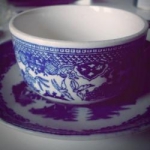Growing up you might have had no idea where all the different sewing bits and bobs were contained, but Mom sure did! There was no end to the places that sewing supplies could be stashed away. Unlike the big sewing cabinets and closets many people use today, back then the fabrics, needles, thread, sewing machine parts, embroidery supplies, and pinking shears had to be stored wherever there was space in the house. And, with the frugality they had back then the lady of the house might use any vessel that came her way to keep everything tucked away.
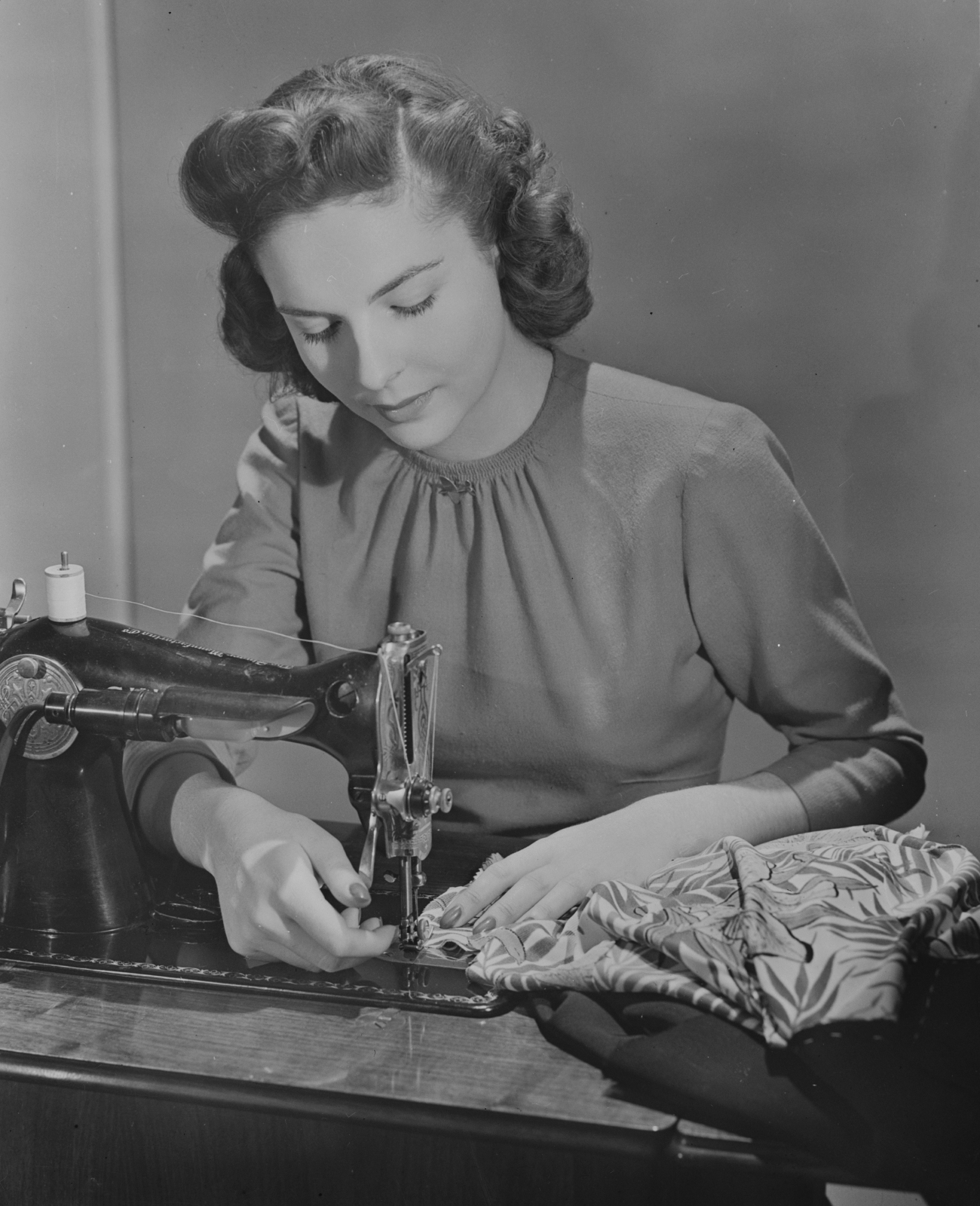
In a Cookie Tin
This is the classic stash spot and one that somehow never failed to disappoint. You’d see the tin and for a moment believe that some butter cookies were coming your way. The sad reality was always spools of thread and embroidery scissors instead of sugar-coated sweets. That blue tin was so familiar, too. You have to wonder if the cookie company sold more of this product because women kept using them for sewing supply storage!
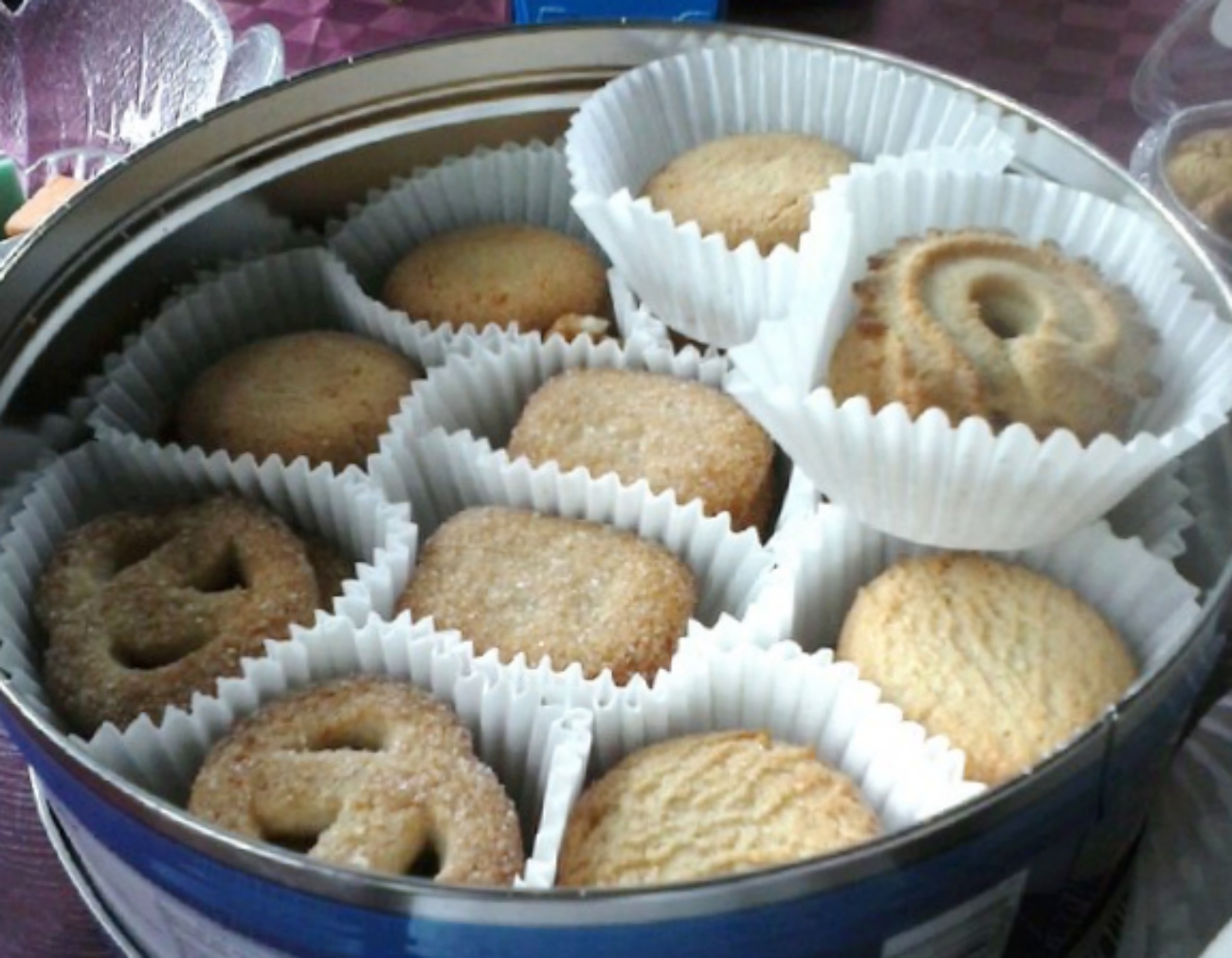
Any Tin Actually
And it wasn’t just the cookie tins, either. Any metal tin was a likely receptacle for sewing notions- especially small ones. The meant that no stray pins or needles could accidentally poke you. Coffee and tea tins were some other favorite storage options. It was like getting free organizing containers each time you went to the grocery.
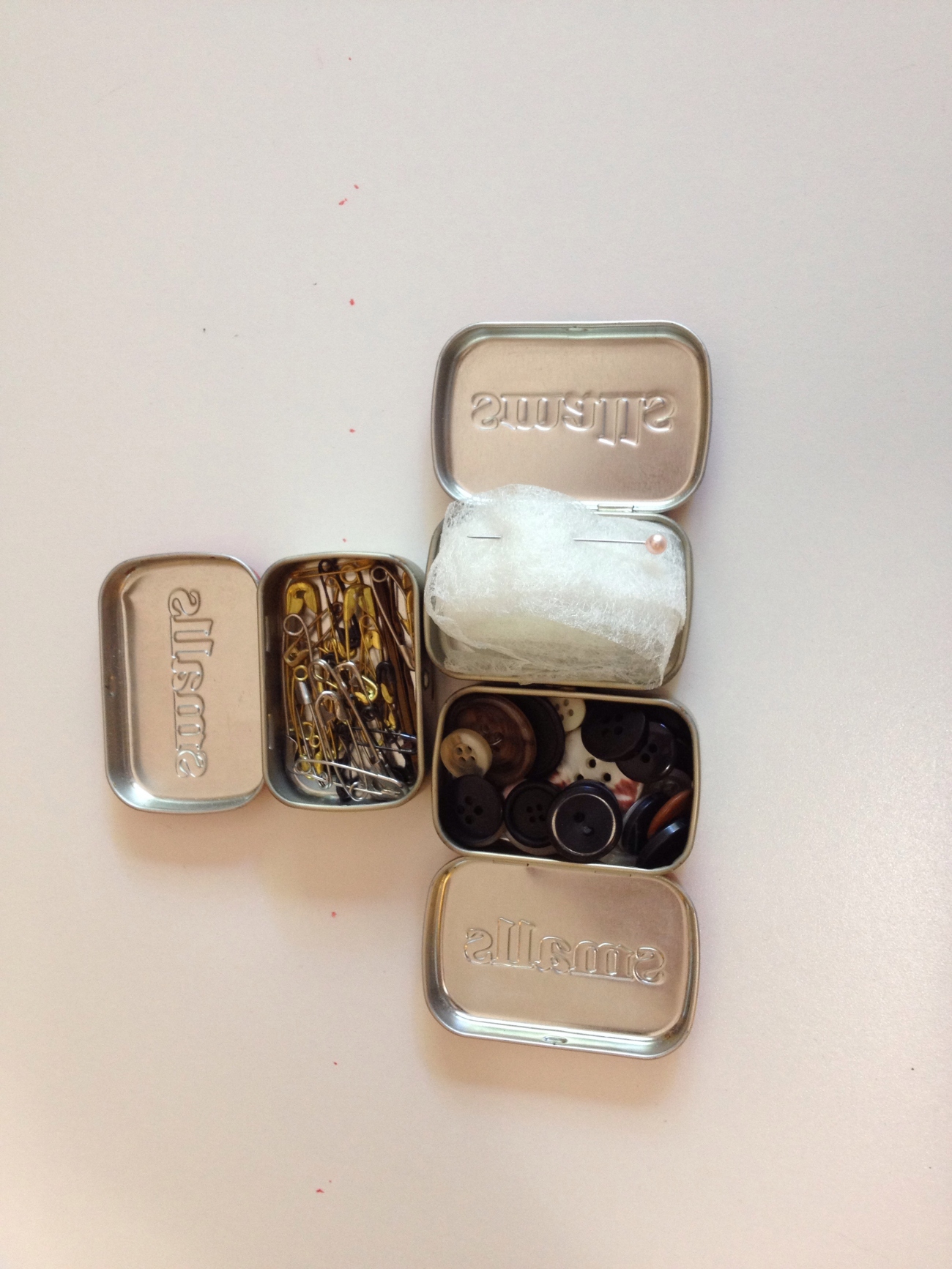
In Jars
It wasn’t just tins, but glass jars and bottles also stored sewing supplies and especially buttons. Every button was saved, even if it didn’t match any of the other ones in the jar. You never know when you might need it!
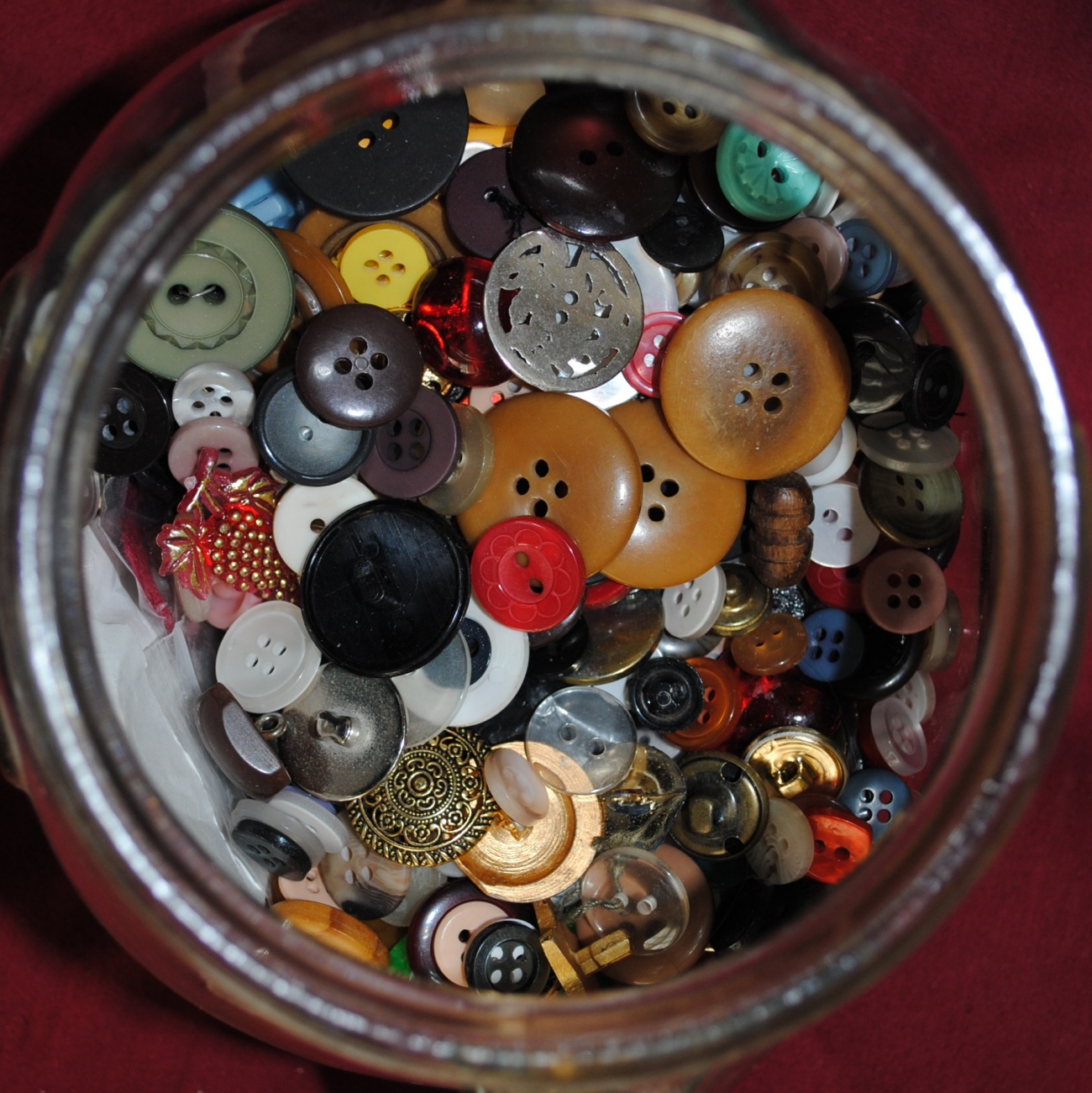
Inside the Sewing Stool
The sewing stool was a critical piece of equipment used to sew at the sewing machine, but sometimes these stools also held a place for extra fabric or sewing supplies. This was a real lifesaver in small spaces especially.
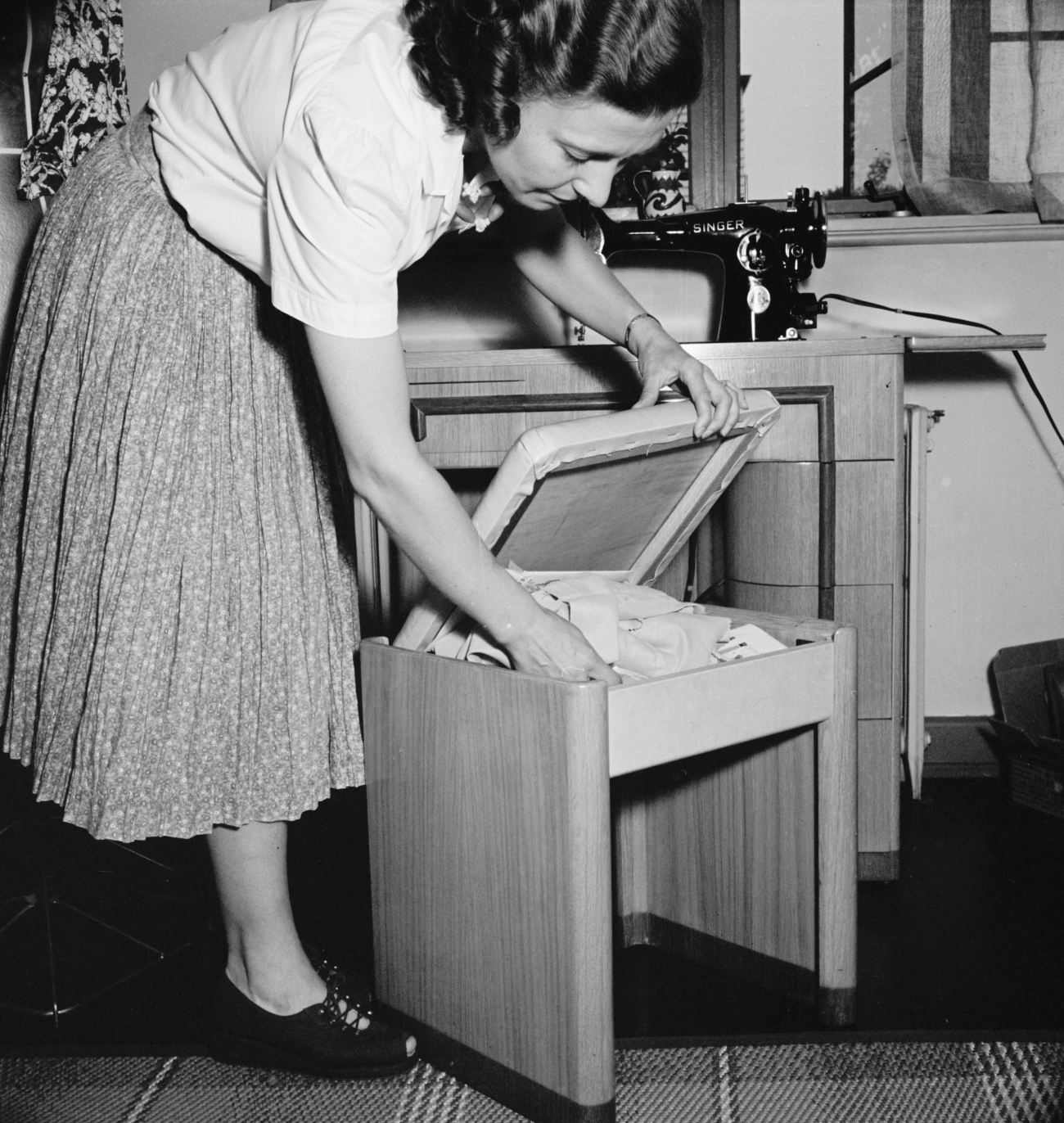
Sewing Basket
This was often where the stuff you really needed was located since it was so portable!
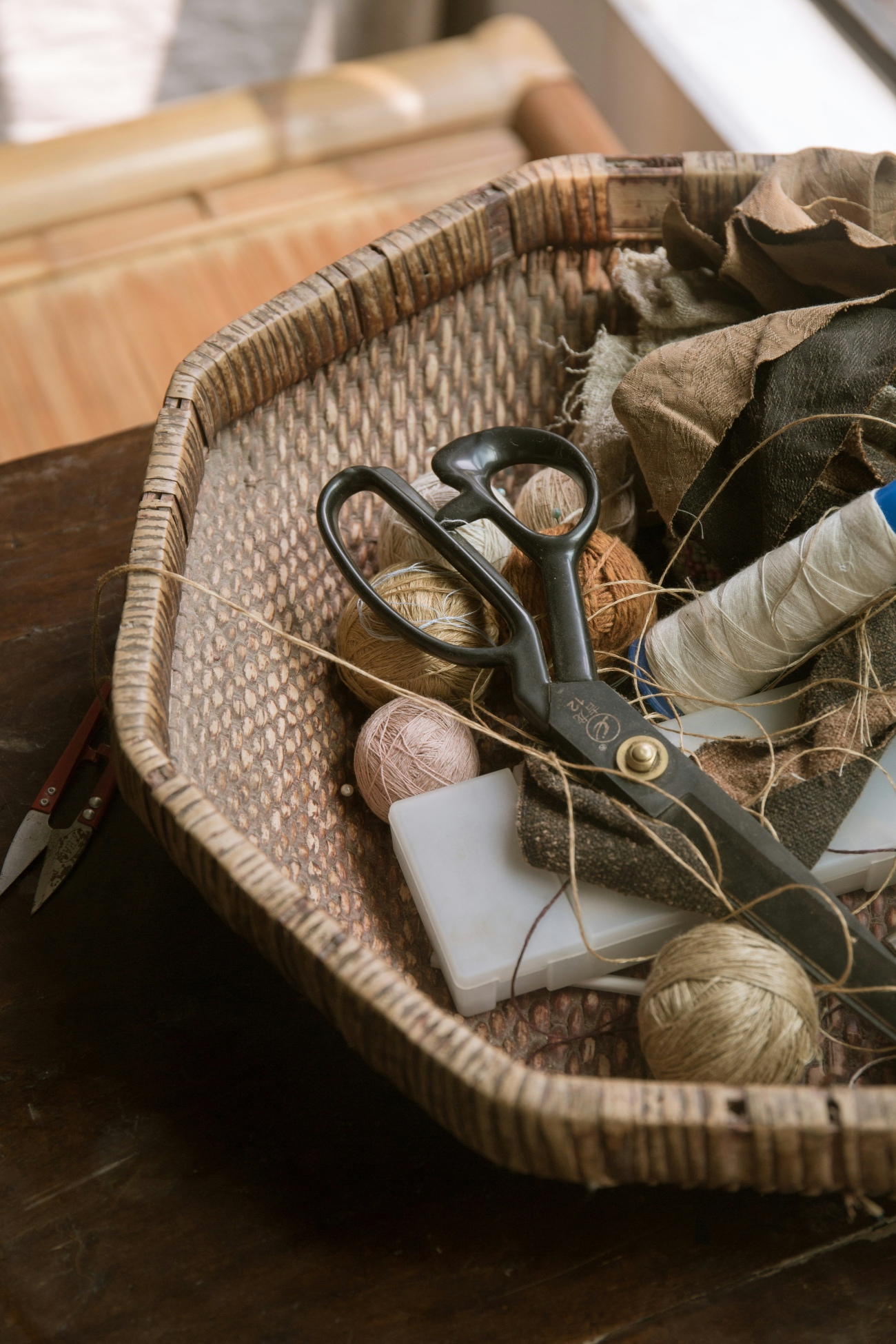
Inside the Sewing Machine Cabinet Drawers
Finally, the last place to look if you need something: the sewing cabinet drawers. These were usually filled with sewing machine manuals, extra presser feet, and other items you really didn’t need to get to that often. But, they also held useful things like chalk and extra pins so it was always worth a peek inside.
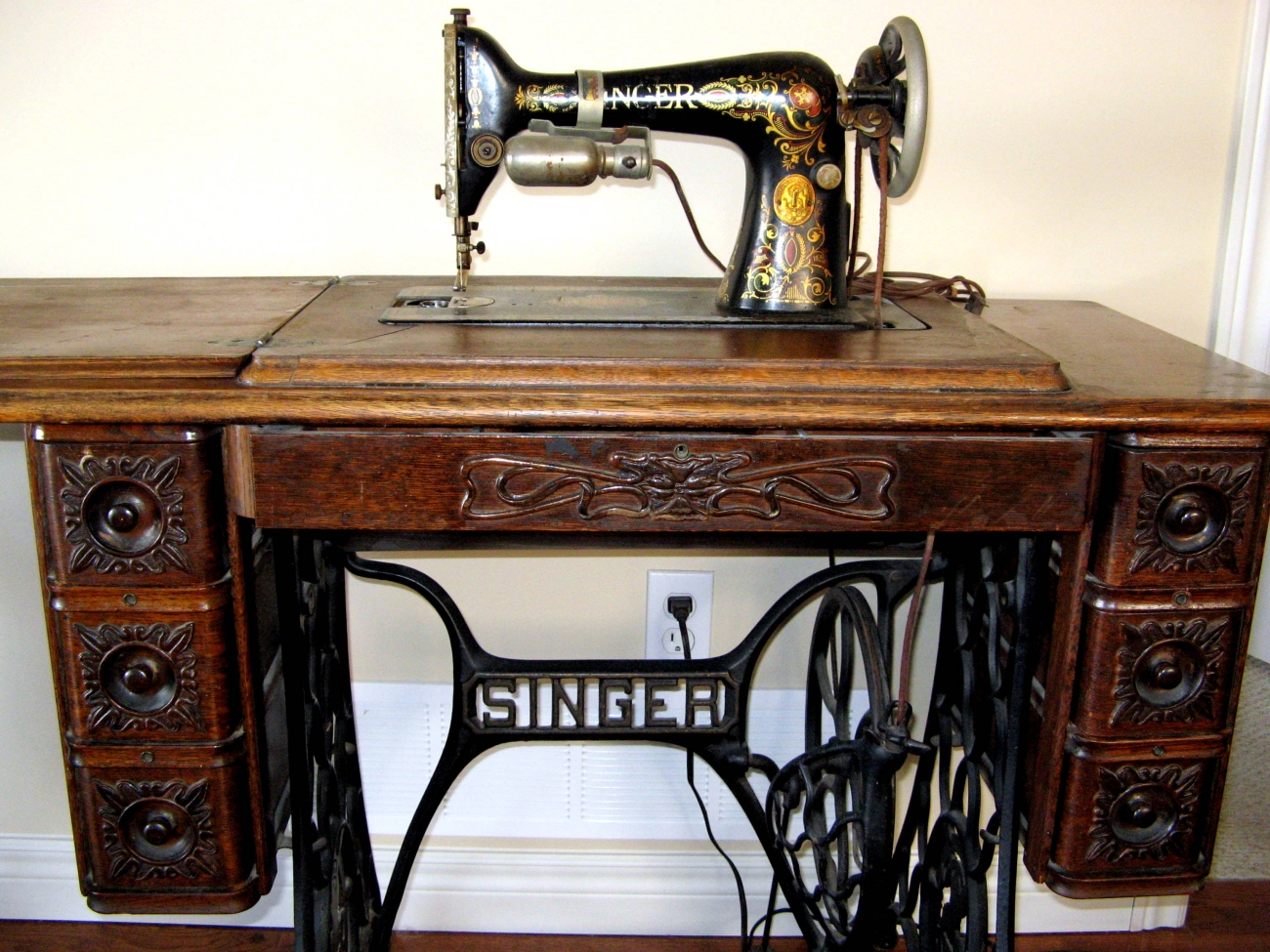
SKM: below-content placeholderWhizzco for DOT

